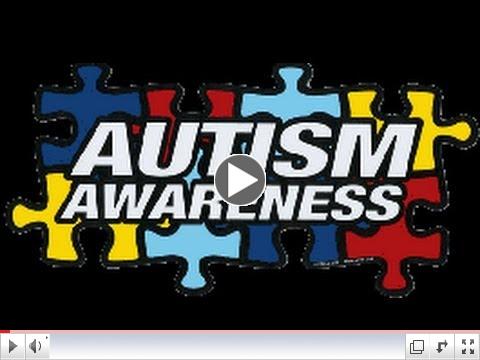Parental Tdap boosters and infant pertussis
| |
Though recommended for many years, evidence for the effectiveness of vaccinating close adult contacts of newborn infants against pertussis remains lacking.
A study of laboratory confirmed infants <4 months of age with pertussis where both parents were immunized against pertussis >4 weeks before infant symptoms began, indicates that maternal vaccination pre-pregnancy and an immunized father reduces the risk of infant pertussis significantly (by 51%!)
Pediatrics
|
Human milk (HM) cream as a supplement to standard fortification of milk for premature infants
| |
In a prospective, non-inferiority, randomized, unmasked study of premature infants 750-1,250gms assigned to receiving a "control" (mothers' own milk or donor HM with HM-derived fortifier) feed, vs. a matched mothers milk plus HM-derived "cream fed" group (to 36 weeks gestational age) indicates that premature infants who receive HM-derived "cream fortified" HM improve weight and length velocity over a "control" group.
Journal of Pediatrics
|
Concordance between spirometry and asthma symptoms in assessing Asthma severity, and beginning therapy by a general pediatrician.
| |
A study comparing the ability of spirometry to guideline-based clinical criteria to assess asthma severity in 894 children aged 5-19 years, indicates that clinically-determined asthma severity does NOT in general correlate well with spirometry determined severity. Spirometry is the best tool for pediatricians to use in determining severity of asthma & to guide appropriate therapy.
Journal of Pediatrics
|
Mobile EHRs: Why Are They Receiving Higher Satisfaction Ratings?
Guest Blog by
Kathy McCoy
Providers using mobile EHR software expressed twice the satisfaction levels of those using EHRs via non-mobile systems, according to a recent survey by tablet-based EHR review group Software Advice. According to the survey, 58 percent of mobile EHR users were "very satisfied" with their EHR, compared to 28 percent of non-mobile users.
Read More>>
________________________
|
|
Updates in Pediatrics is brought to you by:
| |
|
Underwriting Opportunities
|
With a circulation of over 5,000, Updates in Pediatrics offers an excellent opportunity to promote your brand at affordable rates.
|
|
Neuroprognostication after Pediatric cardiac arrest.
Bioethical decisions regarding end of life questions depend, to a significant degree, on the ability of physicians to make accurate and timely predictions regarding neurological recovery.
A study of 18 children successfully resuscitated from a cardiac arrest, utilized pediatric neurologists' and intensivists to review the data associated with subsequent neurologic outcomes after arrest day 1, days 2-4, days 5-7 and at each time period to predict neurologic prognosis. Predicted versus actual neurological results were compared.
Prediction of neurologic outcome following cardiac arrest improves over time for both neurologists and intensivists (equally) to reach "moderate" levels only (much work remains to be done before physicians can confidently, repetitively and accurately determine neuroprognosis after cardiac arrest Ed).
Pediatric Neurology
|
Association of clostridium difficile infection (CDI) with acid suppression medication in children
"Multiple studies have confirmed associations between acid suppression medication and CDI in adults".
A retrospective study of 1,190 children 2-18 years of age diagnosed with CDI who had (or not) proton pump inhibitors or histamine-2 receptor antagonists prescribed, indicates that acid suppression medications (singly or multiple) given to children increase the likelihood of CDI and recurrent CDI. Use these medications judiciously! (Ed)
Journal of Pediatrics
|
Video Feature (via YouTube)
 | |
Bringing the Early Signs of Autism Spectrum Disorders Into Focus
|
|
Repetitive behavior and the diagnosis of Autism Spectrum Disorder (ASD)
The signs and symptoms of ASD vary widely. All children with ASD however exhibit some difficulty in communicating verbally and non-verbally, relating to others, and to thinking and behaving flexibly. The relevance of restricted and repetitive behaviors to the diagnosis of ASD remains unclear.
 | | What Is Autism Spectrum Disorder? |
A study of repetitive behavior of 3 groups of 12 month old infants (with increasing risk for the diagnosis of ASD at 24 months of age) indicates that the highest risk groups show, in a continuum, a greater number of stereotyped repetitive motor movements.
The diagnosis of ASD in infants may be enhanced by the early identification and assessment of infants with repetitive behavior patterns.
Journal of the American Academy of Child and Adolescent Psychiatry |
Total expenditures per patient in hospital-owned and physician-owned physician organizations
From a study of 4.5 million patients treated by integrated medical groups (hospital-owned and independent practices associations), hospital-owned physician organizations spend more on professional, hospital, laboratory, pharmaceutical and ancillary services than physician-owned organizations.
JAMA
|
|
|
Download, print and pin this information on your office wall.
-This is a "Must Have" (Ed.)
|
|
|